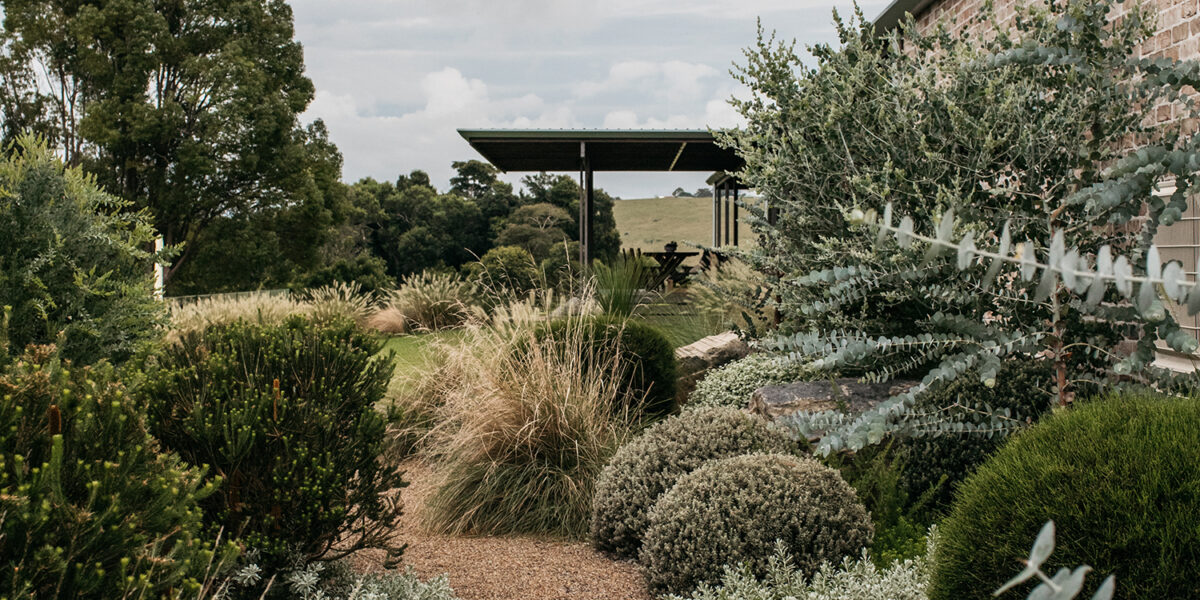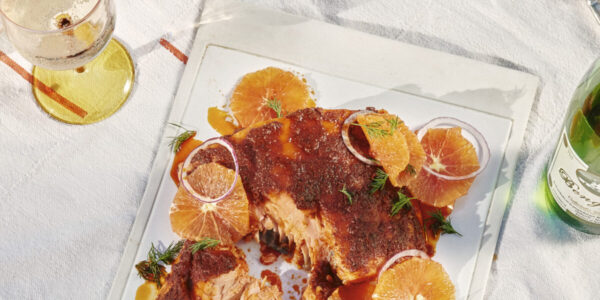
Need Plant Inspo? Look Down Under. Here’s How to Garden Like an Australian
We go to Oz for landscape inspo that’s perfect for the American West.
Here in the West, we are blessed to live within some of the most biologically diverse regions of the world—and when it comes to choosing plants that work for our climate, there are plenty. While native plants are best for your individualized habitat needs, we won’t call the plant police if you want to incorporate a few like-minded varieties within your landscape. In fact, some of my favorite “exotic go-tos” are Australian. They’re perfect for our Mediterranean climate in Southern California, being both drought- and heat-tolerant while adding gorgeous color and texture that works perfectly alongside my other localized plant picks.
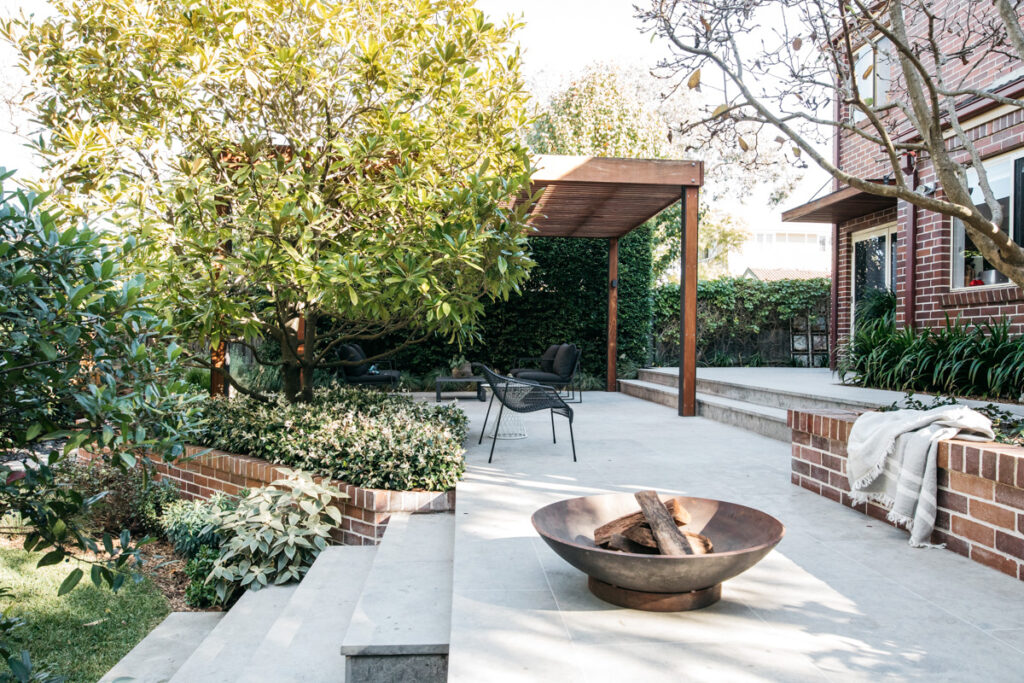
Jessie Ann Harris
Not only have I been incorporating a few Aussie varieties like Leucospermum cordifolium and Acacia dealbata alongside my native buckwheats and salvias, I’ve also been inspired by the new wave of landscape design coming out from down under. Think architectural post fencing (aka: sleeper screening) dotted along a wave of grasses giving a Sea Ranch coastal vibe, or stone pathways softened with a mix of silver and sage ground covers offering a painterly palette full of texture. I’d say the majority of the photos currently pinned in my inspo folders are from the region, including the work of Grant Boyle, founder of Byron Bay’s Fig Landscapes and author of an informative new e-book Guide To Better Gardens, which brilliantly breaks down select Australian plants and how to incorporate them and a number of organic materials into a beautifully designed garden.
Grant’s natural aesthetic has a beautiful balance of rustic and refinement. I particularly love the way he incorporates elevation changes, organic materials, and highly textural botanicals to create outdoor rooms, often featuring simple yet stylish water and fire features. You know, that quintessentially effortless, yet thoughtfully planned indoor-outdoor lifestyle that we all want and love.
I reached out to learn more about the plant and design choices that make Grant’s gardens undeniably Australian and how we might be inspired to bring those ideas into our own. Ready to garden like you’re down under? Let’s grow!
The Anatomy of an Australian Garden

Jessie Ann Harris
When it comes to an “Australian garden,” Grant points out that it must have a diverse range of native fine leaf plants, which are drought-tolerant and are fairly hardy when used in the right application. He suggests using contrasting leaf forms and tones as a great way to bring some design features into your home. “Plants such as Westringia fruticosa, Banksia ericifolia ‘Little Eric,’ and Casuarina ‘Green Wave’ contrast beautifully to succulents and cactus and are all suited to a West Coast climate,” he advises.
5 Australian Native Plants to Try
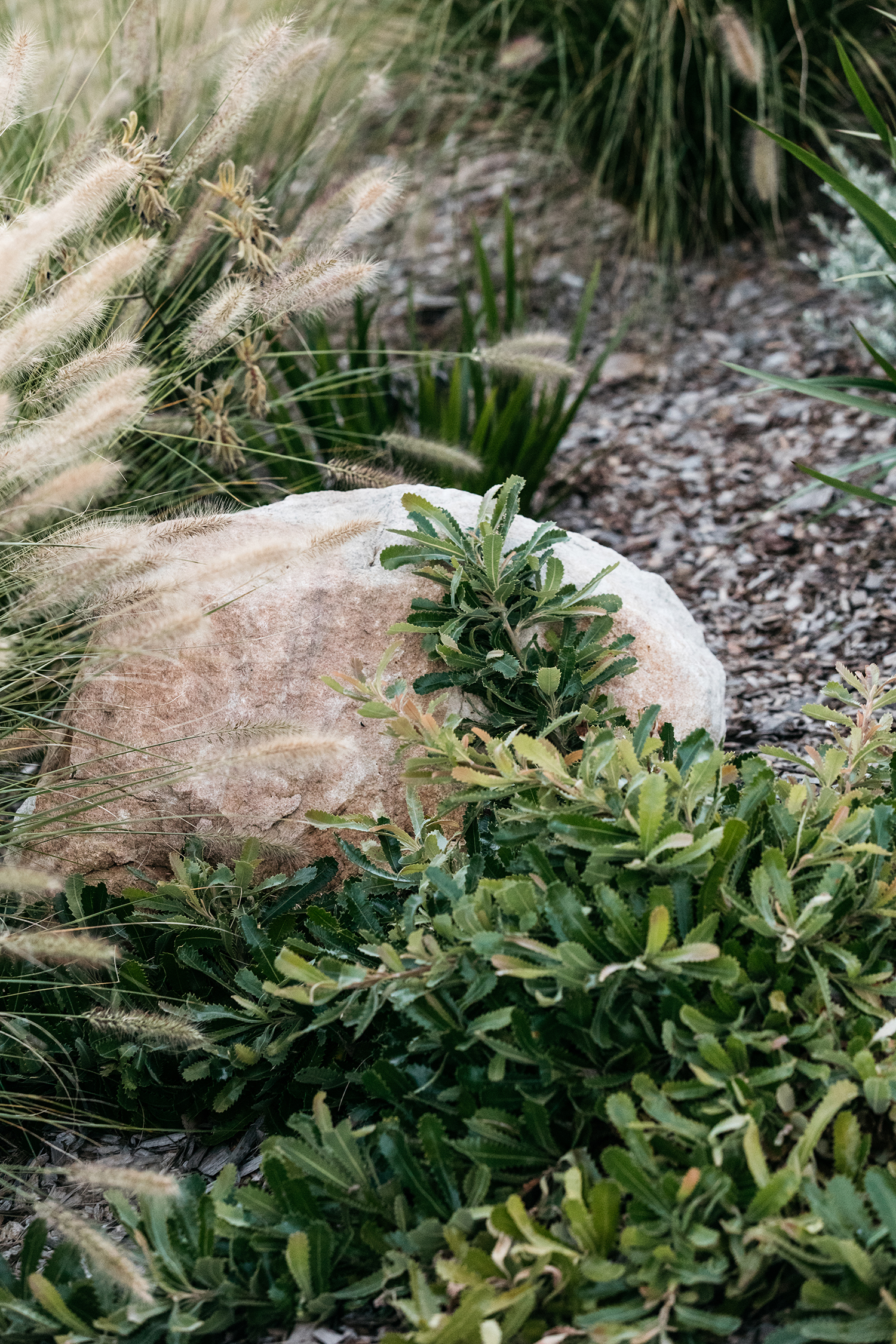
Jessie Ann Harris
Banksia integrifolia
This is one of Grant’s favorite trees, with a beautiful dark green leaf with a slightly aerated edge that has a contrasting silver underside. It responds really well to pruning so it is perfect for the suburban garden. It can be used for screening or as a feature tree.
Westringia
It’s a fantastic shrub mixing the species ‘Mundi,’ ‘Fruticosa,’ and ‘Smokey,’ which takes nicely to pruning and can be clipped into balls, cloud pruned, or used as low hedging. They also look great in a more natural shape although some tip pruning will keep them dense.
Xanthorrhoea glauca
Commonly known as a blue grass tree, this is an excellent feature plant that looks incredible either as a single specimen or en mass. Its glaucus foliage adds drama to the garden as it moves with the wind and it produces large flower spikes that attract bees and honey eating birds and insects.
Banksia ‘Little Eric’
A dwarf version of B. Ericifolia, it grows as tall as seven feet and gets covered in beautiful orange flowers for most of the year, which make for excellent cut flowers. It’s slow to get going but definitely worth the wait; use it as an informal screen or hedge that will attract small birds.
Bracteantha sp
A pretty paper daisy that produces masses of flowers. It comes in a range of different colors and makes an excellent cut flower. It creates a contemporary effect when paired with cactus such as Opuntia ‘Burbank Spineless.’
How to Pair Plants with Australian Native Plants
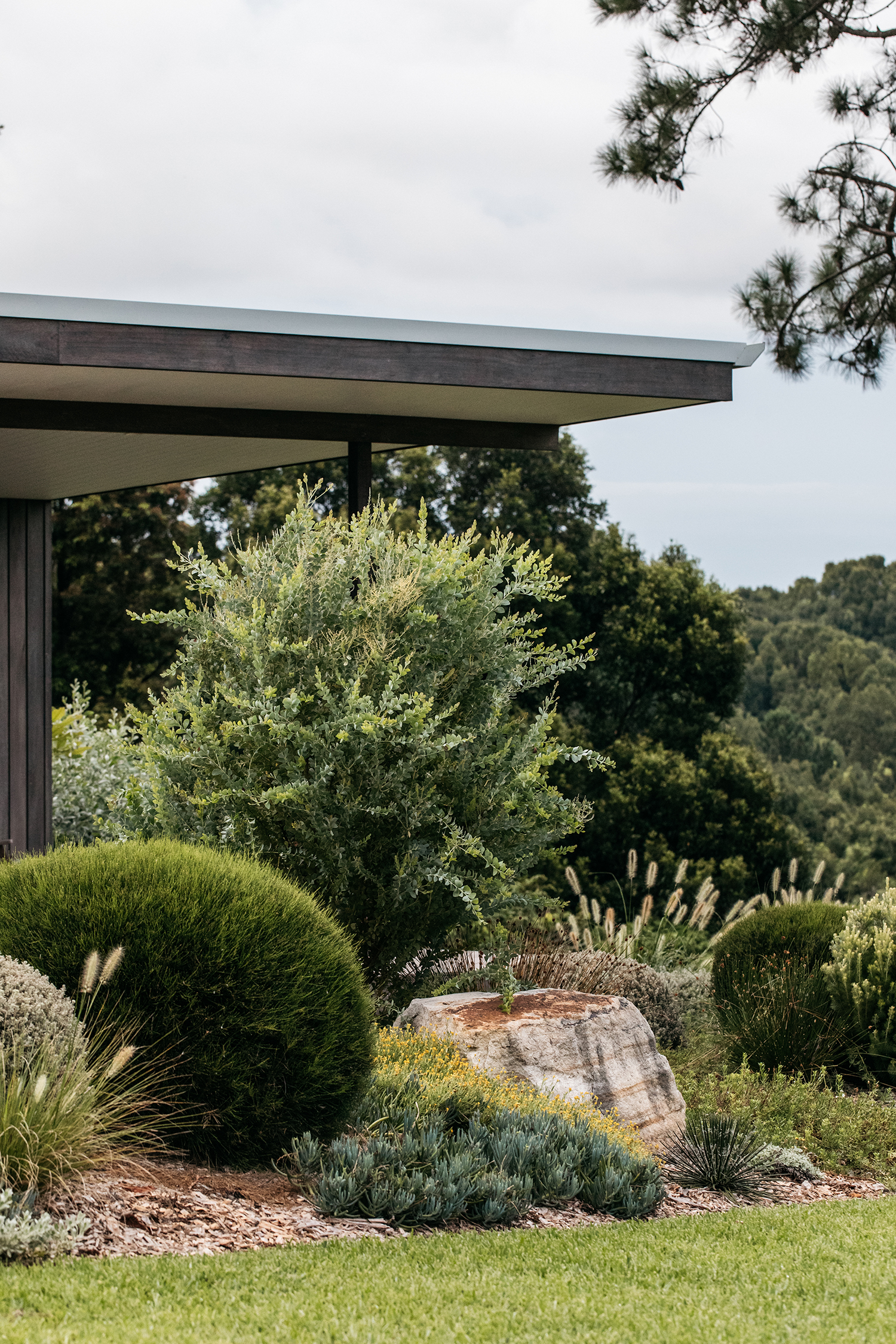
Jessie Ann Harris
When adding Australian plants to an existing garden, Grant explains that most “work incredibly well with cactus and succulents as well as plants native to California, South Africa, the Mediterranean, and Mexico. Each has similarities and can be mixed to create a contemporary, water-wise garden that will be the envy of the neighborhood.” Here Grant shares a few favorite Australian and non-Australian plants to play around with.
Non-Australian Plant Picks:
- Dracaena draco
- Yucca rostrata
- Euphorbia ingens
- Opuntia ‘Burbank Spineless’
- Lavender and rosemary
Pair Them with These Australian Plants:
- Poa labillardierei
- Casuarina ‘Cousin It’
- Westringia fruticosa
- Banksia ‘Little Eric’
- Grevillea ‘Golden Lyre’
- Ozothamnus ‘radiance’
How Australians Landscape and Define Outdoor Rooms
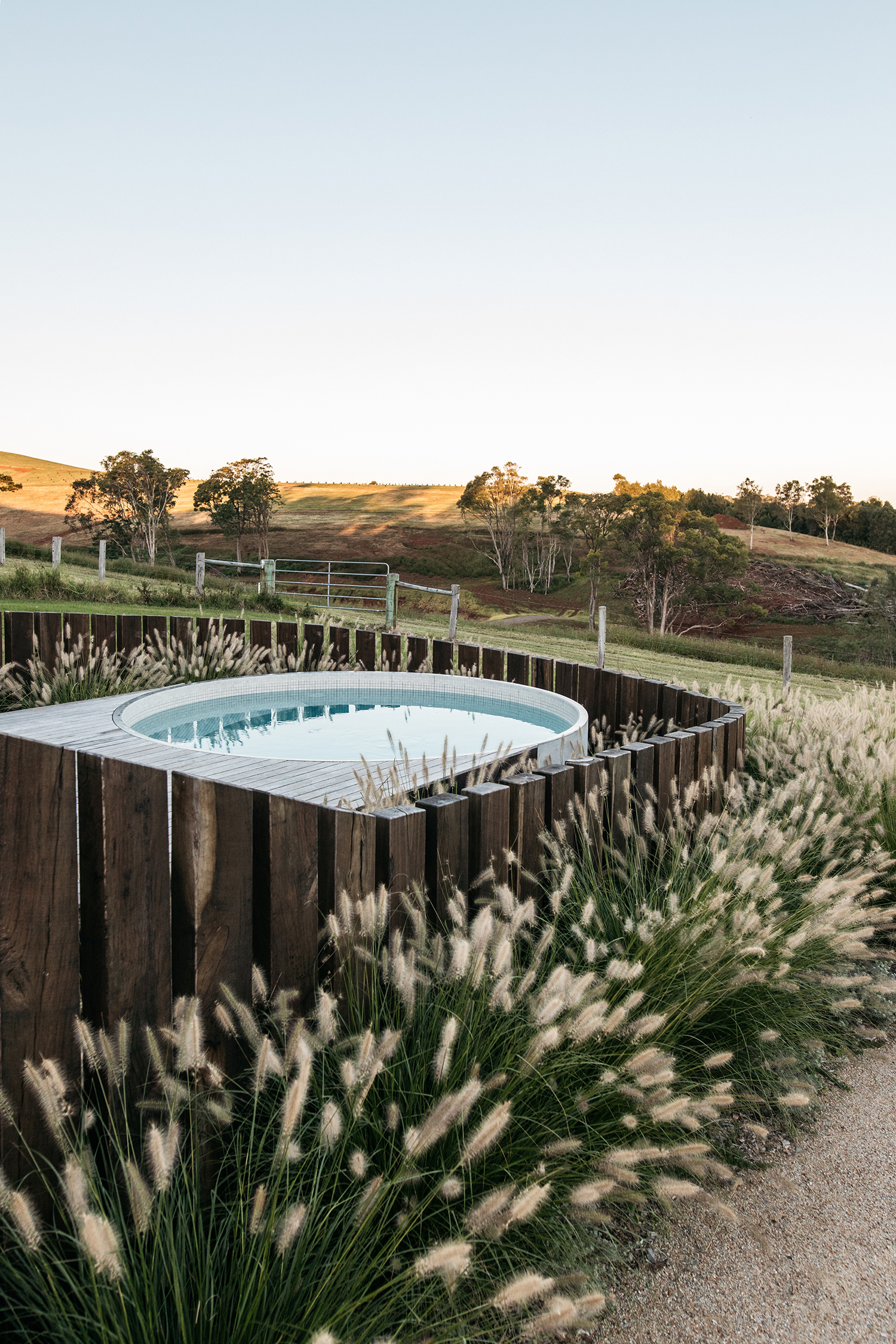
Jessie Ann Harris
Grant and his team work with the existing land, favoring elevation changes in the garden. “Level changes can create interest and define different zones within the garden,” he adds. “I love using corten steel for retaining. Its thin profile allows for more planting and its color and texture contrast beautifully with native plants. Recycled hardwood also features quite a bit in our gardens. We are lucky to have access to local timber yards and quarries. That is what I love about landscaping—it really takes on the sense of the place of the local area.”
How Australians Incorporate Natural Materials and Other Features
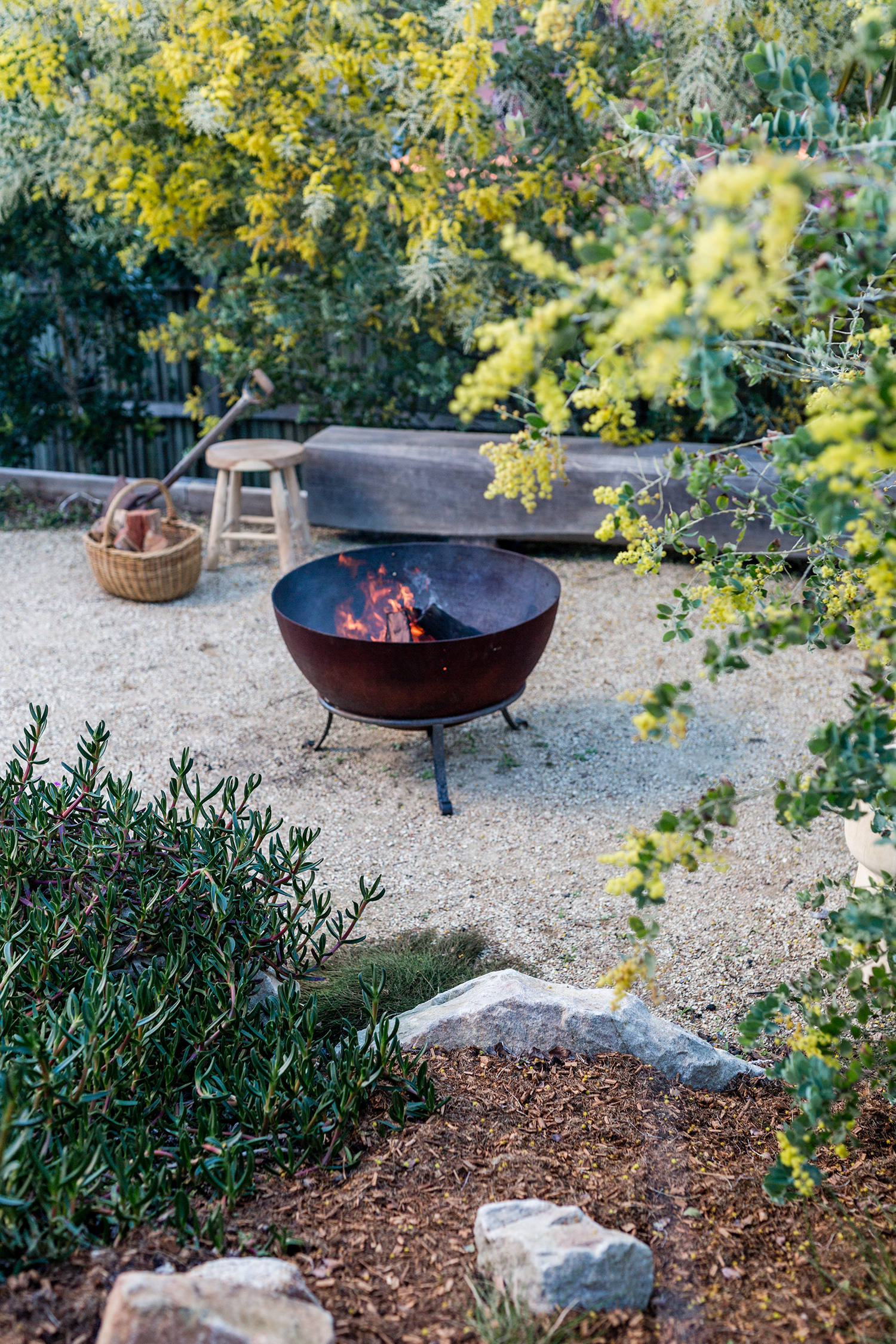
Jessie Ann Harris
Additionally his designs incorporate a lot of boulders into projects. “As a general rule if you can move it by hand it’s too small,” Grant says. Using local stone and recycled bridge timbers is another way to introduce design elements into your space. Flat boulders act as a sculptural piece but also double as informal seating.
In Grant’s ebook Guide To Better Gardens, he suggests playing with natural materials as a form of seating around a designated firepit area, often using reclaimed stumps and boulders. He also suggests having customized cauldrons created using corten steel, which will fit the scale of your designated area while being compact enough to store away in the off season. “In Byron Bay, they only get used for about an 8-week window so having one that can be packed away means the space can be used differently as the seasons change,” he says.
If there’s one design feature that I think the Australians are winning, it’s poolside landscaping. Where many plant materials can be more of a hassle when placed near water features, Grant is not afraid to pack in some botanical textures around these water features. “[I suggest] Eucalyptus ‘Moon Lagoon’ with bright silver foliage, which smells great and makes an excellent cut flower,” he says. “Pair with ground covers such Myoporum parvifolium or Casuarina ‘Green Wave’ and of course a Banksia integrifolia.”
Where to Find Australian Plants
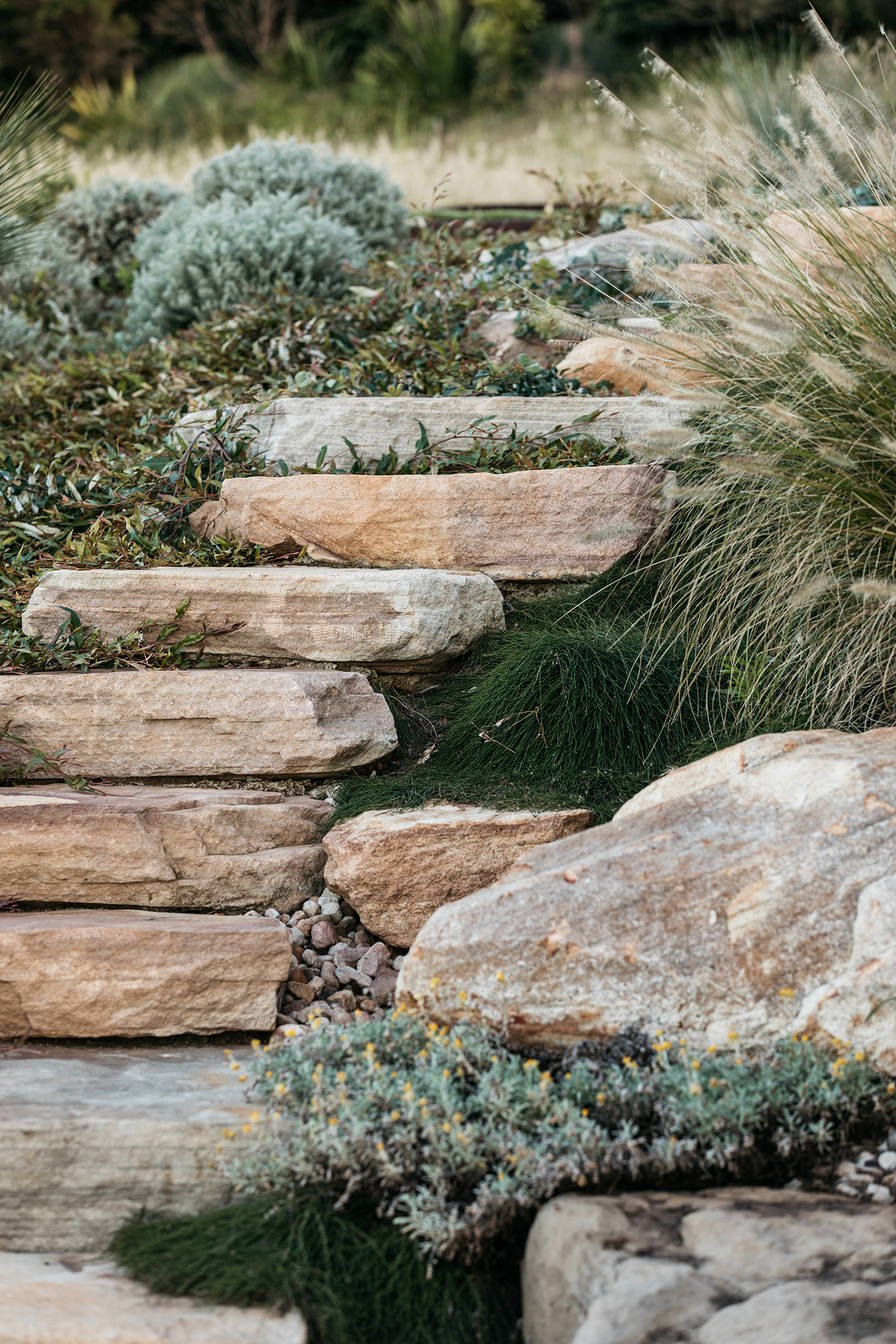
Jessie Ann Harris
Australian plants are finding their way into local nurseries now more than ever. In fact, our friends at the Sunset Plant Collection have a selection of Australian varieties that can be integrated into any garden located in the West:
- Dianella Clarity Blue™
- Dianella Cool Vista™
- Grevillea Eternal Sunshine
- Lomandra Platinum Beauty™
- Phormium Black Adder
- Phormium ‘Blondie’
If you’re on the hunt for something more specific, there are a few specialty nurseries here in the West that offer a wide range of rare and larger-scale Australian natives. Be sure to check ahead for appointment requirements as well as shipping options:
- Australian Plants: Casitas Springs, California
- Far Reaches Farms: Port Townsend, Washington
- Australian Outback Plantation: Tonopah, Arizona
